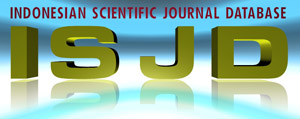The Value of Children for Low Income Families in Yogyakarta
DOI:
https://doi.org/10.23887/jish.v13i2.81172Keywords:
Parents, Family, Value of Children, TFR, Lowest IncomeAbstract
Economics is a factor that influences the decision to have children. The cost of caring for, raising, and educating children is one aspect of managing births. However, in rural farming communities, families have the advantage of having many children. They can function as family workers in the agricultural sector. Gunungkidul Regency, a rural area of Yogyakarta with a majority agricultural sector, has a total fertility rate of 1.96 (2020 Population Census). Around 15.6 percent of Gunungkidul residents are below the poverty line. Why does Gunungkidul Regency have a low fertility phenomenon while the environment and population characteristics allow for high fertility? The results of a qualitative study of low-income families show that they do not want to inherit poverty. Limited access to education, loss of happy childhood times because they have to work, and the destruction of hopes and desires. This condition is very burdensome and hurts feelings. Education is one way to avoid being poor. The hope is to get a formal job with a steady income. Limiting births is a way for children to get maximum education. The geomorphological conditions of the mountains cause limited accessibility when there is no means of transportation. Parents do not expect their children to return the favor in the future. Caring for and raising children responsibly is a parent's obligation. Determining the number of children to have depends on the wishes and abilities of the parents.
References
Ahdiat, A. (2023). 10 Provinsi dengan Angka Kelahiran Terendah di Indonesia. Kata Data. https://databoks.katadata.co.id/datapublish/2023/07/14/10-provinsi-dengan-angka-kelahiran-terendah-di-indonesia
BAPPENAS. (2024). SDGs KNOWLEDGE HUB Agenda 2030 untuk Pembangunan Berkelanjutan. SDGs Indonesia. https://sdgs.bappenas.go.id/
BPS. (2024). BPS Provinsi D.I. Yogyakarta. https://yogyakarta.bps.go.id/subject/23/kemiskinan-dan-ketimpangan.html
Denada, V. S., Fikri, A., & Sokarina, A. (2022). Makna Investasi Pada Anak Dalam Mitos “Banyak Anak Banyak Rezeki”: Studi Fenomenologi. Akuntansi Peradaban, 8(1), 84–99.
Elena, A. & Galina, B. (2015). Well-being : subjective and objective aspects. Procedia – Social and Behavioral Sciences, 166, 36-42. https://doi.org/10.1016/j.sbspro.2014.12.479.
Eddington, N., Shuman, R. (2005). Subjective well-being (happiness). Continuing Psychology Education. 6 Continuing Education Hours.
Farauqi, M. D. A. A. (2022). Analisis Governmentalitas Dan Reproduksi Wacana Dalam Sejarah Munculnya Program Keluarga Berencana Di Indonesia Tahun 1970. Jurnal Politik Profetik, 10(1).
Frejka, T., Jones, G. W., & Sardon, J.-P. (2010). East Asian Childbearing Patterns and Policy Developments. Population and Development Review, 36(3), 579–606.
Gallagher, S. K. & Gerstel, N. (2001). Koneksi dan kendala: Pengaruh anak-anak pada pengasuhan. Jurnal Pernikahan dan Keluarga. 2001; 63 (1):265–275
Gonner, C., Haug, M., Cahyat, Wollenberg, de Jong, W., Limberg, G., Cronkleton, P., Moeliono, M., & Becker. (2007). Capturing nested spheres of poverty: a model for multidimensional poverty analysis and monitoring. Capturing Nested Spheres of Poverty: A Model for Multidimensional Poverty Analysis and Monitoring. https://doi.org/10.17528/cifor/002255.
Gunarsa , S.D. (2003). Psikologi perkembangan anak, remaja dan keluarga. Jakarta : Gunung Mulia.
Hakovirta, M., Skinner, C., Hiilamo, H., & Jokela, M. (2020). Child Poverty, Child Maintenance and Interactions with Social Assistance Benefits Among Lone Parent Families: A Comparative Analysis. Journal of Social Policy, 49(1), 19–39. https://doi.org/10.1017/S0047279419000151
Handayani, A., & Najib, N. (2019). Keinginan Memiliki Anak Berdasarkan Teori Pilihan Rasional (Analisis Data SDKI Tahun 2017). EMPATI-Jurnal Bimbingan dan Konseling, 6(2), 31–40. https://doi.org/10.26877/empati.v6i2.4277
Landiyanto, E. A., J. Ling, M. Puspitasari, dan S. E. Irianti. (2011). Wealth and happiness: empirical evidence from Indonesia. Chulalongkron. Journal of Economics. 23, 1-17.
Medianti, U. S. (2023). Yogyakarta Termiskin di Jawa tapi Penduduknya Bahagia. Bisnis Tempo.co. https://bisnis.tempo.co/read/1683936/yogyakarta-termiskin-di-jawa-tapi-penduduknya-bahagia
Meyer, P. A. (1981). The Value Of Children In The Context Of The Family In Java. Australian National University.
Mardayeti, Desfia. 2013. Gambaran Kebahagaiaan Pada Anak Jalanan.Jurnal. Volume 1. No 1, Maret 2013: (65-76).
Nurwianti, F. (2010). Kekuatan Karakter Dan Kebahagiaan Pada Suku Jawa. Jurnal Psikologi, 3(2), 114-122.
Plotnick, R. D. (1997). Child Poverty Can Be Reduced. The Future of Children, 7(2), 72–87. https://doi.org/10.2307/1602388
Purwitasari, P., Arini, M.. J. (2020). Pemanfaatan dan Kebahagiaan Lansia. Jurnal Psikologi, 4(1).
Rahmadhony, A., Puspitasari, M., Gayatri, M., & Setiawan, I. (2021). Politik Hukum Program Keluarga Berencana di Indonesia. Jurnal Hukum & Pembangunan, 51(3), 574–600. https://doi.org/10.21143/jhp.vol51.no3.3124
Veenhoven, R .(2006). How do we Assess How Happy we are? Tonets implication and tenability of three theories, USA: Paper Presented at Conference on ‘ New Direction in study of happiness: United States and International Perspectives’. University of Note Dame.
Veenhoven, R. (2012). Happiness, Also Known as “Life Satisfaction” and “Subjective Well-being”. Dalam Land, K.C. et. al. (eds). Handbook of Social Indicators and Quality of Life Research. London: Springer, 63-77.
Widianti, N. (2015). Sejarah Perkembangan Program Keluarga Berencana Di Kabupaten Jombang Tahun 1990-1995. AVATARA, e-Journal Pendidikan Sejarah, 3(1).
Wijayanti, H., Nurwianti, F. (2010). Kekuatan karakter dan kebahagiaan pada suku jawa. Jurnal Psikologi, 3(2).
Downloads
Published
Issue
Section
License
Copyright (c) 2024 Umi Listyaningsih, Nanda Muliansah, Dwi Lestari, Sri Rum Giyarsih

This work is licensed under a Creative Commons Attribution-ShareAlike 4.0 International License.
Authors who publish with the Jurnal Ilmu Sosial dan Humaniora agree to the following terms:
- Authors retain copyright and grant the journal the right of first publication with the work simultaneously licensed under a Creative Commons Attribution License (CC BY-SA 4.0) that allows others to share the work with an acknowledgment of the work's authorship and initial publication in this journal.
- Authors are able to enter into separate, additional contractual arrangements for the non-exclusive distribution of the journal's published version of the work (e.g., post it to an institutional repository or publish it in a book), with an acknowledgment of its initial publication in this journal.
- Authors are permitted and encouraged to post their work online (e.g., in institutional repositories or on their website) prior to and during the submission process, as it can lead to productive exchanges, as well as earlier and greater citation of published work. (See The Effect of Open Access)


.png)
.png)













